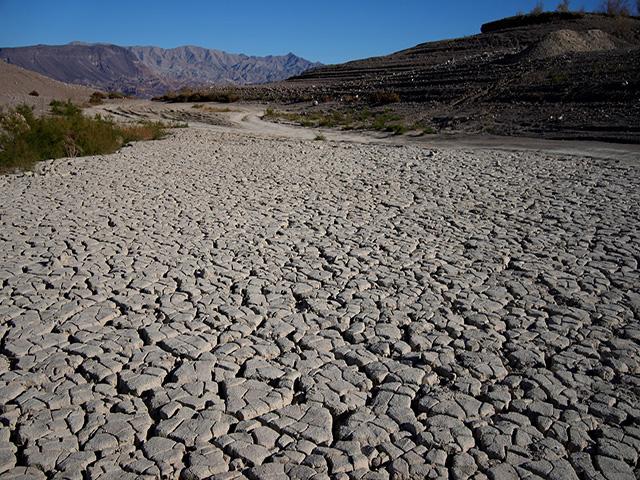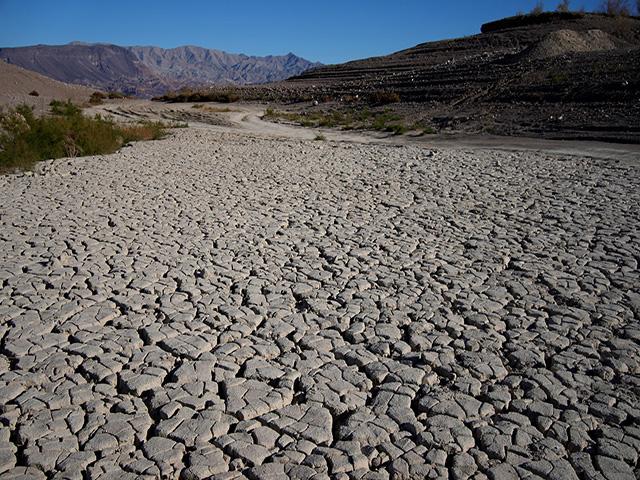Ag Policy Blog
Conservation and Data Offer Solutions to Western Drought Over Water Diversion
While discussion percolates about major water diversions to deal with western water challenges, conservation strategies for water remain the most effective measure states and river basins have to manage declining resources.
That was an analysis from Tony Willardson, executive director of the Western States Water Council, which represents 18 states. The group works on cooperation in areas such as conservation, development and management of water resources.
"The mission of the council is basically to ensure the West has an adequate supply of water to meet its present and future needs," he said. "Those are very diverse. That is not a small task."
Willardson spoke last week at the USDA Outlook Forum on drought challenges and federal policy. He noted most western states have been in some form of drought now for more than two decades, but only in the past two years has the drought received more attention, largely due to the problems with infrastructure, reservoirs and Colorado River struggles.
"We need to do a better job cultivating a western conservation ethic and actually understanding and appreciating the value of water. And it needs to be recognized as a public policy priority."
Agriculture accounts for up to 80% of the consumptive use in the West and it is a focus of attention when it comes to water conservation.
"There are opportunities for us to promote more efficient agricultural uses and to look at net farm income as an important component," Willardson said. "That's one area where we believe if we can provide better data on water rights, it will help those individuals make determinations as to whether or not they want to enter into a water-banking agreement, or a short-term lease with a city or others."
Extensive rains in California and more snowpack in the Colorado mountains are both considered good this year. In some western states, this might be the wettest winter in more than a decade. That moisture may provide states "some breathing room" in areas around policy.
"It's been a good water year. It has created some flooding and we'll see what happens when the runoff season begins and how it affects us with temperature," Willardson said.
The latest update from the U.S. Drought Monitor looking at 11 western states shows nearly 25% of land is not in drought right now, compared to less than 4% a year ago. The area considered n in D3 (extreme drought) and D4 (exceptional drought) also has fallen over the past year from nearly 24% of the land mass to just over 3%. https://droughtmonitor.unl.edu/…
P[L1] D[0x0] M[300x250] OOP[F] ADUNIT[] T[]
All of that is expected to provide precious recharge this spring for the two major reservoirs on the Colorado River, Lake Mead and Lake Powell. As of now, the two lakes remain at historically low levels. That affects not only water access, but the hydropower that the dams also generate.
Deep into the drought discussion, Willardson was asked about the practicality of a large water diversion to help alleviate the shortages such as in the Colorado River. He recalled a recent discussion in the Utah State Senate looking at the possibility of a pipeline from the Pacific Ocean to the declining Salt Lake. The cost would be as much as $100 billion for a lake that provides an annual economic benefit of about $1.9 billion. "It doesn't make a lot of sense."
Since the Western States Water Council organized there have been several talks about pipelines and water conveyance, including suggestions of water pipelines going from as far north as the Yukon province in Canada down to west Texas.
"It seems like every ten years I see another major proposal and they're not economic at this point, and even if they were economical, the environmental and cultural impacts would preclude those."
Willardson added that there have been substantial in-state efforts when it comes to diverting water, such as from northern to southern California or western to eastern Colorado.
"And I think we might see some small increase in those kinds of diversions," he said. "But by and far, conservation is our most effective measure that we have."
Interstate transfers of water are far more complicated and far less likely to happen. Still, there has been a lot of talk over the past year about diverting water from the Mississippi River or Missouri River to provide water needs in Arizona or even western Kansas and eastern Colorado.
As the Mississippi River Basin Ag & Water Desk reported in early February, the idea of large-scale river diversions keeps coming up again and again. Two years ago, Arizona's state legislature passed a bill calling on Congress to investigate pumping flood water from the Mississippi River to the Colorado River.
See, "Pumping Mississippi River Water West: Drought Solution or Pipe Dream," https://www.dtnpf.com/…
The only major water diversion project across state lines that Willardson could recall was New Mexico providing about 100,000 acre feet of water to the Rio Grande River in Texas.
"What makes that work is it is New Mexico's share of the Colorado River that they are diverting to the Rio Grande," he said, adding, "There are no other major diversions between states and between basins that I'm aware of."
Instead, the Western States Water Council and others have been focusing more attention on imaging and data examining just exactly where water is being stored underground. Remote sensing capabilities such as thermal infrared from NASA, which is used more in states to better manage their water resources and see what is going on in the ground.
"There is still a lot we can do, and we will be able to do through voluntary action. That's where we see information being critical and empowering those decisions," he said.
There is a greater push for more reliable data on water and forecasting for major weather events. Willardson cited a quote from the chair of the California State Water Resources Control Board that "reliable water data is almost as important as the water supply itself when it comes to decision-making."
Discussion also is increasing on the federal level about improving seasonal and long-term precipitation forecasts at the National Weather Service (NWS) and the National Oceanic and Atmospheric Administration as well. Better long-term forecasting would provide water managers and farmers with more tools for planning. But the modeling and data are not yet there to improve the accuracy of those forecasts. The National Academy of Sciences estimate it will take about ten years for long-term forecasts to get to the point where they are similar to five-to ten-day forecasts now.
"We're not there yet," Willardson said.
Legislation passed in the past Congress to help federal agencies improve their modeling forecasts. Congress has appropriated some funding for NOAA pilot projects, but it's going to take time and greater funding to make those modeling forecasts a reality.
Chris Clayton can be reached at Chris.Clayton@dtn.com
Follow him on Twitter @ChrisClaytonDTN
(c) Copyright 2023 DTN, LLC. All rights reserved.






Comments
To comment, please Log In or Join our Community .